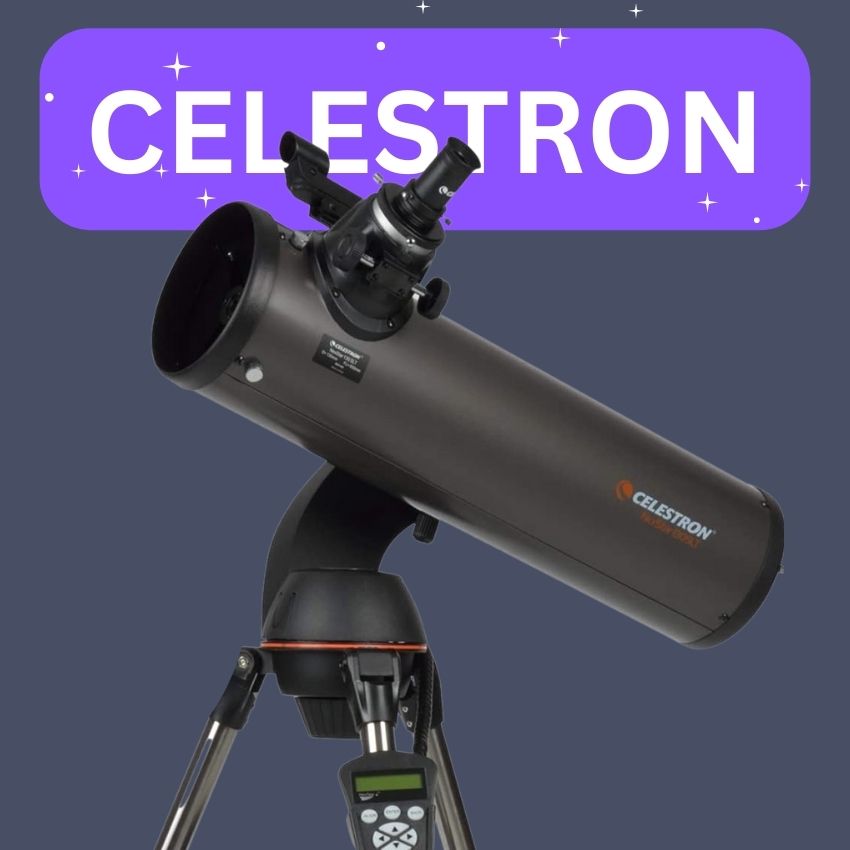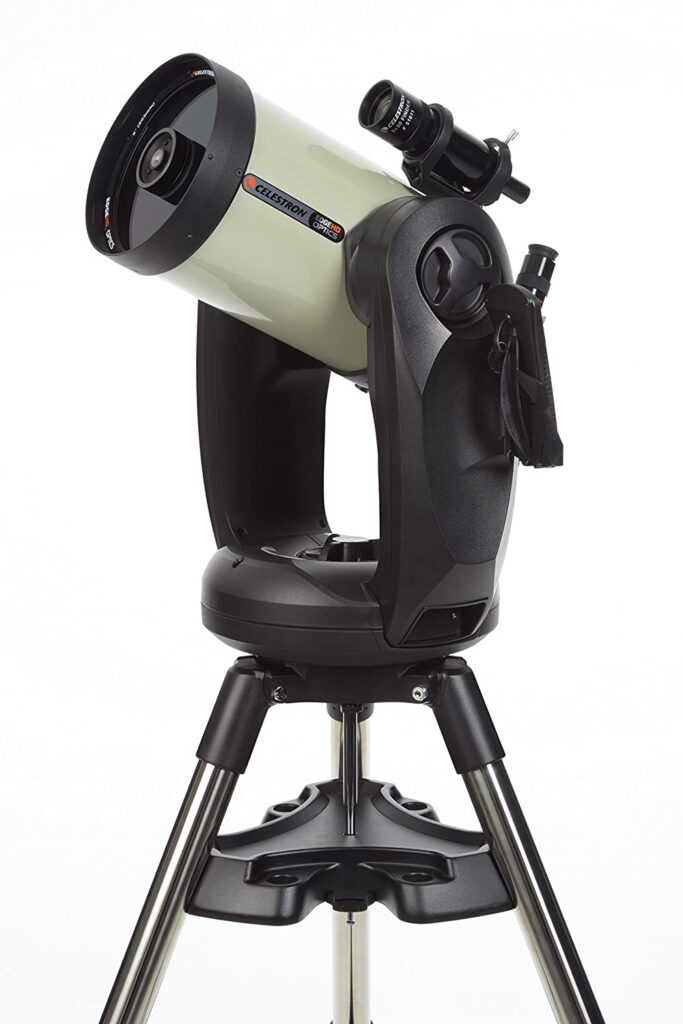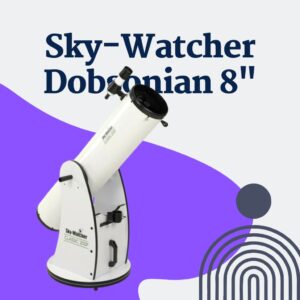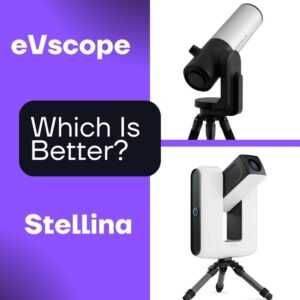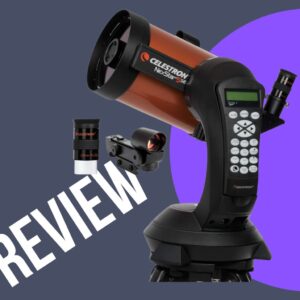This site contains affiliate links to products. I may receive a commission for purchases made through these links.
Celestron is a reputable telescope brand known for its innovative designs and ability to provide high-quality, user-friendly products at affordable prices. They have been in the market for decades and have a wide range of products for both amateur and professional astronomers.
The company’s commitment to innovation and its reputation for quality has made it one of the most recognizable and respected names in the telescope industry.
This blog post is particularly important for those interested in buying a telescope for the first time and for more experienced amateur astronomy community people looking to upgrade their equipment.
By understanding the history and reputation of a brand like Celestron, you can make an informed decision about the type of telescope that best suits your needs and budget.
Celestron’s history
Celestron is a brand of telescopes and astronomical instruments founded in 1960 by Tom Johnson in Torrance, California. An avid amateur astronomer, Johnson began by building telescopes out of spare parts in his garage and selling them to local hobbyists.
In 1970, Celestron released the first commercially available Schmidt-Cassegrain telescope, which combined the optics of a Schmidt camera with the mechanics of a Cassegrain reflector.
This design, known as the Celestron 8, revolutionized the hobbyist telescope market and established the company as a leader in telescope innovation.
In the 1980s, Celestron introduced computerized GoTo technology, allowing telescopes to locate and track objects in the night sky automatically. This made it easier for amateur astronomers to locate and observe celestial objects.
In recent years, Celestron has innovated by introducing new telescope models with advanced features such as WiFi connectivity and high-definition imaging capabilities.
For instance, in 2013, Celestron released the Evolution 8, a portable, 8-inch Schmidt-Cassegrain telescope that featured built-in WiFi, SkyQ Link, and Celestron’s SkyPortal app, which allowed users to control their telescope and access a wealth of astronomical data from their smartphones or tablets.
Celestron’s reputation for quality and innovation has made it one of the telescope industry’s most recognizable and respected names. Today, Celestron telescopes and accessories can be found in the hands of amateur astronomers and professionals worldwide.
What makes Celestron a good telescope brand?
Celestron is considered a good telescope brand for several reasons, including its innovation, high-quality products, cutting-edge technology, affordable price, reputation, educational resources, and support.
Here are some features that make Celestron telescopes a great choice for astronomy enthusiasts.
Computerized GoTo mount
One factor that makes Celestron a good telescope brand is its use of computerized GoTo technology in its telescopes. A GoTo mount is a type of telescope mount that uses computerized controls to automatically point the telescope at specific objects in the night sky.
Celestron was one of the first companies to introduce computerized GoTo technology in the 1980s, revolutionizing the hobbyist telescope market. This technology made it easier for amateur astronomers to locate and observe celestial objects, as the telescope would automatically move to the desired location.
Before GoTo technology, astronomers had to manually point the telescope to the desired location, which is time-consuming and difficult for many, especially beginners.
Celestron’s GoTo technology is considered one of the best in the industry, and it is a feature that has become a standard in many of their telescopes.
The GoTo mount uses a database of over 40,000 celestial objects and allows users to quickly locate and track the solar system, stars, planets, galaxies, and more with a button.
StarBright XLT coatings
StarBright XLT (extra-low dispersion) coatings are multi-coatings applied to a telescope’s lenses that significantly increase the amount of light transmission and reduce glare and reflections.
Celestron’s StarBright XLT coatings are known for their high quality and durability. They are applied to the lenses of the Celestron telescope, including the Schmidt-Cassegrain and EdgeHD models.
They are designed to enhance the telescope’s performance by increasing the amount of light entering it. This results in brighter, sharper, and more detailed images of celestial objects.
The StarBright XLT coatings also reduce glare and reflections, which can cause image distortion, and they are also more resistant to scratches and wear.
StarBright XLT coatings are one of the many ways Celestron is committed to providing high-quality and user-friendly telescopes for amateur and professional astronomers. This technology dramatically improves the performance of the Celestron telescope and makes observing the night sky a more enjoyable and satisfying experience.
SkyAlign technology
SkyAlign is a patented technology that allows users to easily align a computerized GoTo telescope with the dark sky, making it ready for observation in minutes.
SkyAlign technology is easy to use, even for beginners. It involves simply pointing the telescope at any three bright celestial objects in the sky, such as the solar system, stars, or planets, and then entering the information into the telescope’s computer.
The telescope’s computer will then use this information to calculate its position and align itself with the night sky, making it ready for observation.
SkyAlign technology is a feature of many Celestron computerized GoTo telescopes, including the NexStar, CPC, and Advanced VX models. It is a user-friendly and efficient way to align a telescope, making observing the dark sky easy and accessible for amateur astronomers.
SkyPortal WiFi module
The SkyPortal WiFi module is an optional accessory that can be added to Celestron’s computerized GoTo telescopes, allowing users to control the telescope wirelessly via a smartphone or tablet.
The SkyPortal WiFi module connects to the telescope’s computer and can be controlled using the Celestron SkyPortal app, which is available for iOS and Android devices.
The app provides an intuitive and user-friendly interface that allows users to easily navigate the night sky, locate space objects, and control the telescope’s movements.
This technology allows for greater flexibility and convenience when observing the dark sky, as users can control the telescope remotely without needing a computer or hand controller.
The SkyPortal app also includes a built-in star chart, augmented reality, and a social media feature allowing users to share their observations.
You may also like: Celestron SkyPortal WiFi Module (Setup & Review)
SkyQ Link WiFi module
The SkyQ Link WiFi module is an optional accessory that can be added to Celestron’s computerized GoTo telescopes, allowing users to control the telescope wirelessly via a smartphone or tablet.
The SkyQ Link WiFi module connects to the telescope’s computer and can be controlled using the Celestron SkyQ app, which is available for iOS and Android devices.
This technology allows for greater flexibility and convenience when observing the dark sky, as users can control the telescope remotely without needing a computer or hand controller.
Low-profile design
Celestron has a reputation for designing telescopes that are not only powerful and feature-rich but also sleek and compact. This low-profile design makes it easy to transport and set up the telescope and provides a more aesthetically pleasing look.
One of the key examples of Celestron’s low-profile design is the CPC telescope series, which features a compact and lightweight design while maintaining high-performance optics and advanced features such as SkyAlign technology and a built-in GPS.
Additionally, Celestron offers various portable and compact telescope models, such as the C8-A XLT, C9.25-A XLT, and C11-A XLT, all designed to be easy to transport and set up.
This low-profile design makes Celestron telescopes a good choice for amateur astronomers who want a powerful telescope that is easy to use and transport.
Also, Celestron telescopes are a good choice for those who do not want to occupy a lot of space in their homes or observatories.
You may also like: Why Are Observatories Built On Mountaintops?
Fastar/HyperStar compatible
Fastar/HyperStar technology is an accessory that allows Celestron Schmidt Cassegrain telescopes to be converted into a wide-field, fast-focal-ratio imaging system.
The Fastar/HyperStar lens attaches to the front of the telescope’s primary mirror. Combined with a CCD camera, it allows for high-speed imaging, with exposure times as short as a few seconds.
This technology allows for high-quality imaging of deep-sky objects such as galaxies and nebulae.
Fastar/HyperStar compatibility is a feature of many Celestron Schmidt Cassegrain telescopes, including the CPC, CGE, C8, and C11 models.
Schmidt-Cassegrain optical design
The Schmidt-Cassegrain (SCT) design combines a Schmidt corrector plate and a Cassegrain reflector.
The Schmidt corrector plate is a curved piece of glass placed at the front of the telescope. It corrects the spherical aberration that is present in the primary mirror. This allows for a much sharper and clearer image.
The Cassegrain reflector is a concave secondary mirror that reflects the light through a hole in the primary mirror and into the eyepiece.
StarSense AutoAlign technology
StarSense AutoAlign is a computerized alignment system that automatically allows users to align their telescope with the night sky. The technology uses a small camera that attaches to the telescope and takes pictures of the dark sky.
The camera then sends the images to a hand-held controller, which analyzes the images and aligns the telescope with the dark sky.
StarSense AutoAlign technology is a feature of many Celestron computerized telescopes, including the NexStar SE, NexStar Evolution, and NexStar SLT models.
Read also: StarSense Telescopes: A Detailed Overview of the Collection
Integrated GPS
Many Celestron telescopes come equipped with an integrated GPS receiver that automatically allows the telescope to determine its location and time.
Celestron telescopes can use GPS data to determine the exact position of the stars, solar system, and other space objects in the sky, making it easier for users to find and observe them.
The telescope can also use GPS data to update its internal clock automatically, ensuring that it always displays the correct time.
SkySync GPS accessory
The SkySync GPS accessory is an external GPS device that can be connected to Celestron computerized telescopes. It allows the telescope to automatically determine its location and time, similar to the integrated GPS technology mentioned earlier.
The SkySync GPS accessory is an excellent option for those with older Celestron telescopes that do not have built-in GPS technology. It allows them to upgrade their telescope and take advantage of automatic location and time determination benefits.
In addition to the GPS accessory’s built-in battery, it has a serial port that can be connected to the telescope using an RS-232 serial port or an AUX port.
SkyTour feature
The SkyTour feature is a software feature included with many Celestron computerized telescopes. It allows users to create a custom experience of observing the list of space objects and the solar system and automatically guiding the telescope to each object.
The SkyTour feature uses the telescope’s built-in database of space objects, which includes stars, planets, galaxies, nebulae, and other deep-sky objects. Users can select the objects they want to observe and then let the telescope guide them to each object automatically.
Proven NexStar computer control
The NexStar computer control system is a proprietary technology developed by Celestron that allows users to control their telescope with a computer or a mobile device.
The system uses a hand control device or a mobile app to communicate with the telescope, allowing users to quickly point it to any object in the sky and track its motion as the earth rotates.
The system also includes a database of over 40,000 space objects, which makes it easy for users to find and observe a wide variety of objects.
You may also like: Are Celestron NexStar Telescopes Good?
Fully coated glass optics
Fully coated optics is the process of coating the glass surfaces of a telescope’s lenses or mirrors with multiple layers of coatings.
These coatings help increase the amount of light transmitted through the telescope, resulting in brighter and sharper images.
Celestron uses fully coated glass optics in its telescopes, producing high-quality images with minimal distortion, glare, or chromatic aberrations.
Fully coated optics also help to increase the telescope’s light transmission, which is particularly important for observing faint objects such as galaxies and nebulae.
Heavy-duty pre-assembled tripod
The tripod plays a critical role in the stability and performance of a telescope because it supports the telescope on three legs.
The telescopes from Celestron are equipped with heavy-duty tripods that provide the telescope with a stable platform.
The heavy-duty construction of the tripod ensures that it can withstand the weight of the telescope and the forces of wind and vibration, which can cause the telescope to move or shake. This makes the telescope more stable and allows for sharper and clearer images.
Erect image optics
Erect image optics is a type of telescope design that allows the telescope to produce an image right-side up and not inverted. As a result, terrestrial objects, such as birds or landscapes, can be seen more clearly, as well as sky objects can be tracked and found more easily.
Celestron uses erect image optics in many of its telescopes, including its refractor and reflector models. This allows the telescope to produce an image that is right-side up and not inverted, which makes it easier to view terrestrial objects and find and track objects in the sky.
StarPointer finderscope
A finderscope is a small telescope used to help locate objects in the sky by providing a wider field of view and a red dot or cross-hair reticule to aid in pointing the main telescope at the desired object.
The StarPointer finderscope is a unique finderscope developed by Celestron, it is a red dot finderscope that projects a red dot on the sky. It is easy to use and helps quickly locate and center objects in the telescope’s field of view.
This feature is handy for beginners or those new to using telescopes, as it makes it easier to find objects in the sky.
Read also: What is the lifespan of a home telescope
Best Celestron telescope models and their features
Celestron has been a leading brand in the telescope industry for decades, offering a wide range of models for amateur and professional astronomers.
Here are some of the best Celestron telescope models and their features.
1. Celestron NexStar 8SE
There is no doubt that Celestron NexStar 8SE is one of the best reflector telescope models on the market. With its various features, Celestron Nexstar is a computerized telescope that both beginners and experts can use.
Celestron Nexstar SE also comes with Celestron’s StarBright XLT coatings, which provide enhanced light transmission and improved image brightness and clarity.
Celestron Nexstar features a Schmidt-Cassegrain optical design, which provides a compact and lightweight design while still delivering high-quality images.
Other features of the Nexstar SE include an integrated GPS, a heavy-duty pre-assembled tripod, and the SkyAlign technology, which allows users to align the telescope quickly and easily.
Read the full review here: Celestron NexStar 8SE Telescope Review (Read Before Purchase)
2. Celestron PowerSeeker
The Celestron PowerSeeker is another great reflector telescope model from Celestron. It is an entry-level telescope that is perfect for beginner astronomers looking for an affordable and easy-to-use option.
One of the main features of the PowerSeeker is its fully coated glass optics. These optics provide clear and bright images and help to reduce glare and reflection.
Additionally, the telescope features a refractor optical design, known for its excellent image sharpness and clarity.
The PowerSeeker comes with an equatorial mount, which seems a bit complex at first, but you will be thankful for having selected it instead of an azimuth mount which is simpler to set up but very limited in functionality.
PowerSeeker includes a StarPointer finderscope, which makes it easy to locate and track objects in the sky, and an erect image diagonal, which allows for comfortable viewing.
3. Celestron Advanced VX
The Celestron Advanced VX is a high-performance reflector telescope for intermediate and advanced users.
One of the main features of the Advanced VX is its computerized GoTo mount. This mount uses precision motors to move the telescope to any of its 40,000+ space objects with the push of a button.
The Advanced VX also comes with Celestron’s StarBright XLT coatings, which provide enhanced light transmission and improved image brightness and clarity.
Advanced VX includes a built-in GPS receiver, which provides accurate coordinates for accurate pointing and tracking, and a heavy-duty stainless steel tripod, which provides a stable platform for observing and imaging.
Additionally, the telescope features a German equatorial mount known for its stability and precision, which also make it a decent telescope.
4. Celestron CPC
The Celestron CPC (Celestron Advanced Computerized Telescope) is a high-end reflector telescope designed for serious amateur astronomers and professionals.
Those looking for a powerful and versatile telescope will find it to be an excellent choice.
A SkySync GPS accessory is available, which allows the user to quickly align the telescope with the sky.
The CPC also comes with Celestron’s StarBright XLT coatings, which provide enhanced light transmission and improved image brightness and clarity.
The telescope features a Schmidt-Cassegrain optical design, known for its compact form factor and high-resolution images.
5. Celestron C8
The Celestron C8, also known as the Celestron 8-inch SCT (Schmidt-Cassegrain Telescope), is a popular reflector telescope model that offers a powerful combination of aperture and portability. It’s a classic telescope model that has been around for decades and is still a favorite among amateur astronomers.
One of the main features of the C8 is its 8-inch aperture, which allows it to gather a large amount of light and provide bright and detailed images of celestial objects.
The telescope also features a Schmidt-Cassegrain optical design, known for its compact design and high-resolution images.
The C8 has a focal length of 2032mm and a focal ratio of f/10, making it an excellent telescope for wide-field and deep-sky observing.
6. Celestron FirstScope
The Celestron FirstScope is a small and compact reflector telescope designed for beginners and children. Despite its small size, it offers a 76mm aperture and a 300mm focal length, which allows it to provide bright and detailed images of celestial objects.
One of the main features of the FirstScope is its easy-to-use design, which makes it accessible for anyone to use. The telescope comes pre-assembled and ready to use, and it has a simple Altazimuth mount that allows for easy pointing and tracking of objects in the sky.
The FirstScope also features a StarPointer finderscope that makes it easy to locate objects in the sky and has a built-in tray that holds your eyepieces.
It’s perfect for backyard observation or for taking on camping trips.
7. Celestron NexStar SLT
The Celestron NexStar SLT (Star Location Telescope) is a computerized telescope designed for amateur and experienced astronomers.
The NexStar SLT features StarBright XLT coatings on all optical surfaces, enhancing the overall image’s brightness and clarity. Additionally, it has a built-in SkyTour feature that generates a personalized tour of the night’s best objects in the sky.
The NexStar SLT is also compatible with a range of accessories, including the SkySync GPS accessory, which allows the telescope to align with the exact location and time automatically.
8. Celestron Omni XLT
The Celestron Omni XLT is a series of reflector telescopes that offers a range of aperture sizes and features to suit the needs of different types of users. They are designed for both amateur and experienced astronomers.
StarBright XLT offers coatings on all optical surfaces, enhancing the overall image’s brightness and clarity.
The Omni XLT also has a low-profile design and is compatible with various accessories, including the SkySync GPS accessory.
The Omni XLT comes with Celestron’s StarSense AutoAlign technology, which allows the user to align the telescope by simply pointing it at any three bright objects in the sky. It has an integrated GPS for easy and accurate location settings.
9. Celestron Astromaster
The Celestron Astromaster is a series of telescopes designed for both beginners and experienced astronomers. These telescopes are known for their easy-to-use design, high-quality optics, and affordable price point.
One of the main features of the Astromaster is its durable and sturdy design. The telescopes come with a pre-assembled, heavy-duty tripod designed to withstand regular use and keep the telescope stable during observations.
Another feature of the Astromaster is its erect image optics, which provide an upright and fully corrected image, making it easy to observe celestial and terrestrial objects.
Additionally, it has a StarPointer finderscope that helps users quickly and easily locate objects in the dark sky.
The Astromaster also has a range of eyepieces that allow various magnification options.
Read also:
- What Can You See with Celestron AstroMaster? (Model by Model Breakdown)
- Celestron Astromaster 70 AZ Telescope Review
- Celestron Astromaster 114EQ Telescope Review
10. Celestron C90
The Celestron C90 is a compact and portable telescope ideal for terrestrial and celestial observations. It is a compound design telescope, which combines a reflector and a refractor telescope.
It features a 90mm aperture and a 900mm focal length, making it an excellent option for observing the Moon, planets, and bright deep-sky objects.
One of the main features of the C90 is its Maksutov-Cassegrain optical design, which provides high-quality images with minimal chromatic aberration and distortion. This design also makes the telescope more compact and lightweight, making it easy to transport and set up.
The Astromaster series comes in various aperture sizes to suit different needs and budgets, and it is available in refractor and reflector models. Celestron Astromaster is a great telescope for those looking for an easy-to-use, affordable option for exploring the night sky.
Celestron accessories to use with your telescope
Celestron offers a wide range of accessories to enhance your observing experience and improve the performance of your telescope. Some of the most popular Celestron accessories include:
Celestron Eyepieces
Celestron offers a variety of eyepieces to enhance your observing experience. These eyepieces are designed for use with Celestron telescopes and are available in a range of focal lengths to provide different magnifications.
They are made with fully multi-coated optics that offer high contrast and bright images. Some popular Celestron eyepiece models include the Ultima Series, the X-Cel LX Series, and the Plossl Series.
View more Celestron eyepieces here: Celestron Telescope Eyepieces (All Models)
Celestron Filters
Celestron filters are designed to block specific wavelengths of light, which can improve the visibility of particular objects or details.
Popular Celestron filter types include color filters, which can enhance the contrast of different features on a planet or moon, and nebula filters, which can improve the visibility of diffuse nebulae.
Celestron also offers polarizing filters, which can reduce glare and increase the image’s contrast.
Celestron Mounts
Celestron mounts are designed to securely hold and position the telescope, allowing for accurate tracking and pointing of space objects. Some popular Celestron mount models include the CG-5, the Advanced VX, and the NexStar.
These mounts use computerized GoTo technology to automatically locate and track celestial objects, making it easy for users to find and observe a wide range of objects.
Celestron Tripods
Celestron offers a variety of tripods to support their telescopes, including heavy-duty pre-assembled tripods that can handle the telescope’s weight and provide a stable platform for observing.
Celestron tripods are made of high-quality materials, such as aluminum, and are designed to withstand the elements and provide a stable base for the telescope.
Celestron Barlow Lens
Barlow lens is an optical device placed between the eyepiece and the telescope to increase the eyepiece’s magnification. Celestron offers a variety of Barlow lenses that can be used with their telescopes to increase magnification and enhance the viewing experience.
Celestron Barlow lenses are made with high-quality optical glass and are designed to be easy to use and provide clear and sharp images.
Some popular models include the Ultima 2x Barlow Lens and the Powermate 2x Barlow Lens.
You may also like: The Best Barlow Lens for Any Telescope
Celestron Collimator
Celestron collimator is a device used to align the optical elements of a telescope. Celestron offers a variety of collimators that can be used with their telescopes to ensure that the telescope is aligned correctly and provides the best possible image quality.
With these collimators, you can align Celestron telescopes with ease.
The Celestron collimators are made of high-quality materials designed to be durable and long-lasting.
Celestron Red Dot Finderscope
A finderscope is a small telescope used to help locate objects in the night sky. The Celestron Red Dot Finderscope is a popular option among stargazers, as it uses a red dot reticle to make it easy to find and track objects.
The Red Dot Finderscope is lightweight, easy to use, and easy to mount on most Celestron telescopes. It is also affordable, making it an excellent option for beginners.
Celestron Star Diagonal
An observer can view the telescope’s image from a more comfortable position when using a star diagonal, which reflects light at a 90-degree angle.
Celestron offers a variety of star diagonals that can be used with their telescopes, including the 1.25″ Star Diagonal and the 2″ Star Diagonal.
Celestron Star Diagonals are designed to be durable and easy to use, and they are made with high-quality optical glass for clear and sharp images.
Celestron T-Adapter
A T-Adapter is a device that allows you to attach a camera to a telescope and take long-exposure images of celestial objects.
Celestron offers various T-Adapters compatible with their telescopes, including the T-Adapter for NexStar SE and SLT, T-Adapter for CPC, and T-Adapter for C8 and C9.25 SCT.
Celestron T-Adapters are designed to be easy to use and provide a secure connection between your camera and telescope.
Celestron T-Ring
A T-Ring is an adapter that allows you to connect a camera to a telescope. It attaches to the camera’s lens mount, and the other end connects to the T-adapter, which attaches to the telescope.
Celestron T-ring is typically designed to be compatible with specific camera models or lens mount types.
T-ring is made of durable materials such as anodized aluminum and comes in different threads, such as T-thread, M42 thread, and others.
Celestron Dew shield
A Celestron Dew shield is a device that attaches to the front of the telescope’s objective lens to prevent dew from forming on it. Dew can make it difficult to see through the telescope and damage the lens over time.
A dew shield is especially useful for telescopes in humid environments or at night when the temperature drops.
Celestron Carrying case
The Celestron Carrying case is a protective case designed to transport and securely store Celestron telescopes. The case is typically made of hard plastic or a durable fabric and has a handle or strap for easy carrying.
It also usually has custom-cut foam inserts to keep the telescope and accessories snugly in place during transport.
Those who travel frequently or want to protect their telescope during storage should consider this option.
Celestron Power Tank
Celestron Power Tank is a portable power supply that can be used to power a variety of Celestron telescopes and accessories. It typically uses rechargeable batteries and can provide power for several hours.
This device is excellent for those who want to use their telescope for extended periods or in remote locations where a power outlet is unavailable.
Celestron Dew Remover
Celestron Dew Remover is a device that helps prevent dew from forming on the telescope’s lens. This can be especially useful in humid environments or at night when the temperature drops.
Dew Removers usually take the form of a small heater that attaches to the telescope’s lens and keeps it warm enough to prevent dew from forming.
Observers who want to avoid constantly wiping dew off their lenses can benefit from this device.
Celestron Laser Pointer
Celestron offers a laser pointer accessory that can be used to help point out stars and other celestial objects to other viewers. This can be especially useful in group viewing situations or when trying to show someone a specific object in the night sky.
The laser pointer is typically small, portable, and easily attached to the telescope. Some models may have a built-in compass and inclinometer to help with polar alignment.
Celestron Power supply
Celestron offers a variety of power supply options, including battery packs and AC adapters, which can be used to power your telescope and accessories.
These power supplies are designed to be durable, reliable, and long-lasting, and they can be used with a wide range of Celestron telescopes and accessories.
Whether observing in the backyard or on a remote mountaintop, a good power supply is essential for hassle-free telescope use.
You may also like: 10 Top Celestron Telescopes to See Planets (Ranked!)
Uncovering the Power of Celestron: Brand’s Innovations and Best Telescope Models
Celestron is a well-established telescope industry brand known for its innovative designs and high-quality optics.
Some key factors contributing to Celestron’s success include its computerized GoTo mount, StarBright XLT coatings, SkyAlign technology, low-profile design, and the use of proven NexStar computer control.
Celestron offers a wide range of telescope models, including refractors and reflectors. Some of the best models include the NexStar SE, PowerSeeker, Advanced VX, CPC, and C8.
Overall, Celestron is a reputable brand offering a range of high-quality telescopes and accessories, making it a great choice for amateur and professional astronomers.
If you’re looking to enhance your planetary viewing experience, be sure to check out our 5 Best Telescope Eyepieces for Viewing Planets blog for recommendations on the top eyepieces to use.
Read also:

